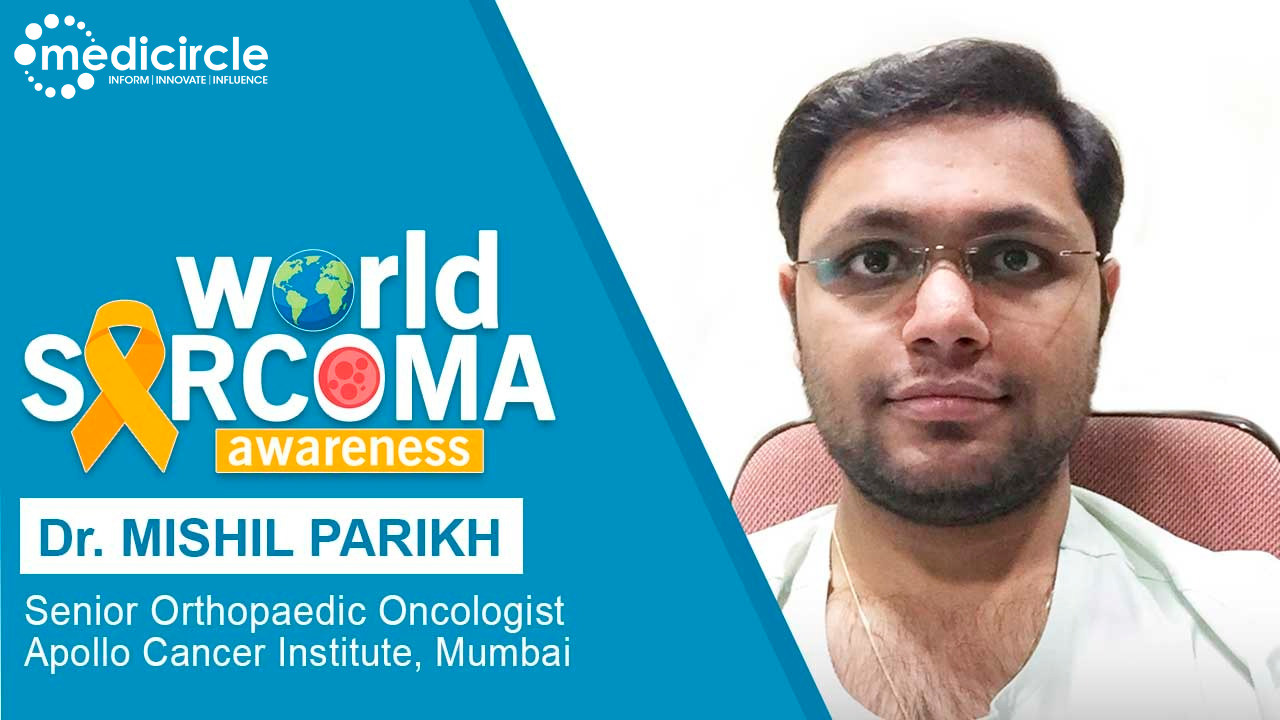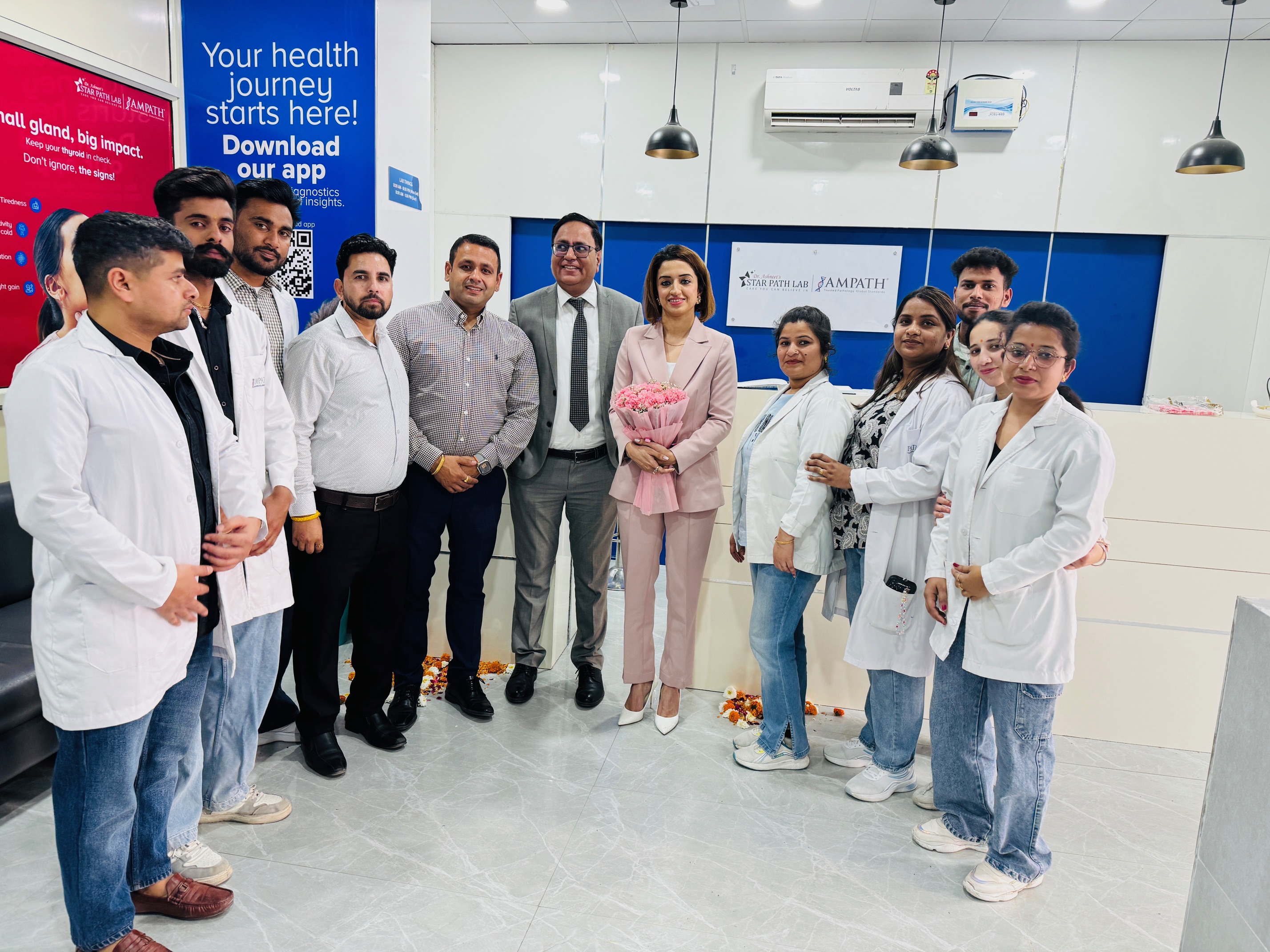Sarcoma is the general term for a broad group of cancers that begin in the bones and the soft tissues. Bone sarcomas are rare tumors approximating 0.2% of all cancers. The common subtypes identified in India include eating sarcoma and synovial sarcoma. Soft tissue sarcoma forms in the tissues that connect, support, and surround other body structures. This includes muscle, fat, blood vessels, nerves, tendons, and the lining of the joints. It has an average of 2.1% of the frequency range in males and 1.2% in females, as sarcoma awareness days are absorbed every year on July 21. We at Medi circle are conducting an exclusive series to raise awareness about this rare medical condition.
Dr. Mishil Parikh, a Senior Orthopaedic Oncologist has been practicing medicine at Apollo Cancer Institute in Mumbai. Dr. Parikh completed his fellowships in bone and soft tissue oncology at Tata Memorial Hospital in Mumbai and musculoskeletal oncology at the University of Florida in the USA. In the last five years of this experience, Dr. Mishil has amassed comprehensive knowledge and immense experience in bone sarcomas soft tissue sarcomas benign bone tumors, cutaneous melanoma, and squamous cell carcinoma of the skin and metastatic bone diseases. He's additionally trained and skilled at keyboard biopsy, limb salvage surgeries, and mega prostheses.
Cancer and sarcoma
Dr. Mishil expresses, “Sarcoma is a kind of cancer. Every tumor is not cancer. Cancers are of different types of which most common are carcinoma cancer like Ca stomach, Ca esophagus, Ca breast. The other form is sarcoma, which is found mostly in bones and connective tissues such as blood vessels, tendons, nerves. So, sarcoma is specifically cancer of these tissues. Bone sarcoma is one of the rarest forms of cancer. Its incidence is less than 1% of all cancer prevalent in the world.”
Characteristics of sarcoma cancer
Dr. Mishil adds, "There is no specific reason for this kind of cancer. Unlike normal cancers, this sarcoma is not because of any bad habits or lifestyles. 99% of sarcoma is without any reason and 1% can be due to genetic.”
Dr. Mishil informs, “Inflammation in any part of the body that doesn't go with an unknown cause is a matter of concern. Without injury, if there is any inflammation in bones or any soft tissues indicates a tumor. Not necessary that it is sarcoma but it can be dreadful. It can be a warning sign of some major issue. Sometimes it can be painful. This is more common in children of the 8-18 age group. In these children, even a minor injury lasts for a long time. And this needs a proper investigation.”
Diagnosis of sarcoma
Dr. Mishil says, “X-ray is the basic test for detecting sarcoma. Sarcoma is easily detectable through x rays. A doctor can figure out the presence of a lump by looking at the x-ray of the patient. For more information, the doctor can also recommend MRI. MRI and ultrasound are the basic test procedure for diagnosing sarcoma.”
“After diagnosing the presence of lumps, a biopsy is done. The biopsy is useful in the diagnosis of soft tissue sarcomas. Biopsy is performed by inserting a needle into the lumps and a small part of that tissue is taken and tested in the pathological lab for further treatment.”
Treatment of sarcoma
Dr. Mishil talks, “After establishing sarcoma, body scan (CT, PET, body) is performed. For every type of sarcoma, there are different types of tests. A body scan enables one to determine the presence of tumors in other parts of the body. Firstly, we give chemotherapy to these patients that slows the growth of the disease. Not necessary that chemotherapy works in every patient. Then by doing an x-ray and CT scan we try to know the exact status of the disease and then with the help of surgery, that portion is removed from the body. The size and position of lumps matters for doing surgery. The advancement in science has helped in saving many lives. Surgeries too have limitations. It is not advisable to those with advanced-stage or to the one whose body is not responding to chemotherapy.”
Management of sarcoma
Dr. Mishil emphasizes, “Sarcoma can be managed by use of chemotherapy and surgeries. Apart from this, radiation therapy is also helpful in controlling the disease. Doctors can sterile the margins by giving radiations. Radiation can be given even after surgeries. In bone and soft tissue sarcoma, radiation can easily be used. However, the role of chemotherapy is restricted in soft tissue sarcoma. There are almost 75 different types of soft tissue sarcomas. Biopsy interpretation is very important in diagnosing sarcoma and plays an important role in its treatment.”
“Cancer is a chronic disease. Due to advancements in science, we are capable of treating any type of cancer. Today there are 30% of people who have overcome cancer in the last 10 years and sustaining a normal life. Due to government schemes and trust's help, money is not a factor in the treatment of cancer. The only important thing is getting the right treatment at right time. In case the disease relapses after the first surgery, treatment is available for that also. Cancer is not a full stop; it is a comma.”
(Edited by Renu Gupta)

 “X-ray is the basic test for detecting sarcoma. MRI and ultrasound are other test procedures for diagnosing sarcoma. Sarcoma can be managed by the use of chemotherapy and surgeries. The only important thing is getting the right treatment at right time. Cancer is not a full stop; it is a comma,†says Dr. Mishil Parikh, Apollo Cancer Institute
“X-ray is the basic test for detecting sarcoma. MRI and ultrasound are other test procedures for diagnosing sarcoma. Sarcoma can be managed by the use of chemotherapy and surgeries. The only important thing is getting the right treatment at right time. Cancer is not a full stop; it is a comma,†says Dr. Mishil Parikh, Apollo Cancer Institute









.jpeg)


.jpg)





.jpeg)

.jpg)





.png)


